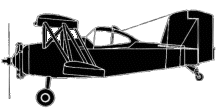
ASN Wikibase Occurrence # 164951
This information is added by users of ASN. Neither ASN nor the Flight Safety Foundation are responsible for the completeness or correctness of this information.
If you feel this information is incomplete or incorrect, you can submit corrected information.
| Date: | Friday 28 February 2014 |
| Time: | 09:55 |
| Type: |  Grumman G-164A Ag-Cat |
| Owner/operator: | Trinkle Ag Flying |
| Registration: | N72ES |
| MSN: | 958 |
| Year of manufacture: | 1972 |
| Total airframe hrs: | 16615 hours |
| Engine model: | Pratt & Whitney R-985 |
| Fatalities: | Fatalities: 0 / Occupants: 1 |
| Aircraft damage: | Substantial |
| Category: | Accident |
| Location: | Kenny's Cropdusting private airstrip, Fresno, CA -
 United States of America United States of America
|
| Phase: | Landing |
| Nature: | Agricultural |
| Departure airport: | Caruthers, CA (None) |
| Caruthers, CA (None) | |
| Investigating agency: | NTSB |
| Confidence Rating: |
The pilot completed his third aerial application sortie of the day in the airplane, and was returning for landing on the paved private airstrip. On touchdown, the pilot heard a “huge bang,” and the airplane began to roll right wing down. The pilot tried to correct with aileron, but as the airplane slowed, its right wing contacted the ground. The airplane veered to the right, departed the paved surface, and struck an embankment that bordered the runway, which caused the airplane to nose over. The airplane came to rest inverted, partially down the embankment.
Examination of the airplane revealed that the right main landing gear leg had fractured and separated near the upper bend just below the fuselage. Laboratory analysis revealed that the leg failure was the result of a fatigue crack that went undetected until the remaining material was insufficiently strong to sustain the landing load. The fatigue crack originated at the site of electrical arc damage to the gear leg. Possible mechanisms for the arc damage included a power line strike, a lightning strike, improper grounding during weld repairs to the airframe, or processing damage during overhaul of the landing gear. Because the gear leg was heat-treated, the airplane manufacturer prohibited welding of the leg. The presence and condition of paint on the gear leg’s surface at the site of the arc damage indicated that the damage occurred before the paint was applied and that the gear leg had not been painted in the recent past. Finding paint covering the damage raises questions about what inspections were performed on the gear leg and the efficacy of the inspections; however, because the maintenance records were not available, the history of the gear leg could not be determined.
Probable Cause: An undetected fatigue crack in the landing gear leg, which initiated at an electrical arc-induced damage site of undetermined origin and resulted in landing gear failure. Contributing to the severity of damage to the airplane was the close proximity of an embankment to the runway.
Accident investigation:
 |
|
Sources:
NTSB
FAA register: http://registry.faa.gov/aircraftinquiry/NNum_Results.aspx?NNumbertxt=72ES
Location
Revision history:
| Date/time | Contributor | Updates |
|---|---|---|
| 27-Mar-2014 03:07 | Geno | Added |
| 21-Dec-2016 19:28 | ASN Update Bot | Updated [Time, Damage, Category, Investigating agency] |
| 29-Nov-2017 13:33 | ASN Update Bot | Updated [Other fatalities, Departure airport, Destination airport, Source, Narrative] |
Corrections or additions? ... Edit this accident description
The Aviation Safety Network is an exclusive service provided by:


 ©2024 Flight Safety Foundation
©2024 Flight Safety Foundation